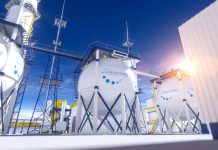What the heck is it, and what are its advantages?
Manifold Pressure (usually referred to as ‘MAP’), is the amount of pressure entering the aircraft engine (or any combustible engine), cylinders.
Manifold pressure is measured in between the throttle valve and the intake manifold of the Single Engine Monitors. Now, let us assume the aircraft is parked in the hanger with engines off. In this situation, the MAP displayed will equal pressure at the airport. At sea level, the MAP gauge should display 29.92. The higher the elevation, lesser the pressure.
Now, when the pilot starts the aircraft engines and the throttle is not touched, the Manifold pressure will fall because the air sucked in by the cylinders will create a low pressure in the manifold.
In a normally aspirated piston engine aircraft, the manifold pressure will usually be slightly below atmospheric. In a turbocharged aircraft, because of the presence of the compressor and turbine, the engines can supply power at a much higher pressure.
As you might guess, the compressor compresses the air prior to feeding it into the cylinders. The presence of the compressor means the aircraft engine does not have to rely on free-flowing air that gets less and less with altitude. The compressed air allows the aircraft to climb quickly without losing power.
Of course, the compressor also relies on external air and therefore, it too will progressively suck in less air as the aircraft gains altitude and the engines will lose power. However, the loss of power is much less compared to normally aspirated piston engine aircraft.
So why is the MAP gauge required – what is its advantage?
Well, when the pilot wants to reduce the power, he (or she) needs to reduce the MAP before the propeller RPM Sensor.
If the pilot does it the other way around (i.e. reducing the RPM is reduced before the manifold pressure), then, this will lead to damage to the engine components because pilot will would be supplying a higher pressure of charge into the cylinders even though the coarsening of the propeller reduced the engine speed.
On the other hand, if the pilot wants to increase power, the props should be set first and then the manifold should be altered.
What the manifold pressure sensor and gauge do, is to indicate to the pilot, the health of the fuel-air mixture entering the cylinder. The fuel-air mixture ratio needs to stay the same. Any changes will be reflected in the MAP gauge thereby altering the pilot that there is a problem with the air intake.
If the air intake decreases, the fuel air mixture will get ‘richer’ but the lack of oxygen in the combustion will reduce the power output. The aircraft would therefore be burning more fuel but without the corresponding increase in power. Now you know why MAP gauge and sensors are important and their advantage to the pilots.
For More Information, Please Visit: https://www.jpinstruments.com/shop/manifold-pressure-sensor/






